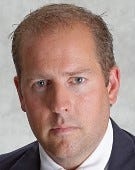MSP 501 Profile: Ashton Technology Solutions on Avoiding the 'Race to the Bottom'

Company Name: Ashton Technology Solutions
MSP 501 Rank: 414
Sales & Marketing Manager: Jim Abbott
Headquartered: Beachwood, OH
Primary Services:
Managed IT
Security solutions
Backup and disaster recovery
Cloud computing
Compliance, audit and diligence
Project services
Wireless networking
Twitter: @AshtonSolutions
Go to the Ashton Technology Solutions website and you get a quick glimpse into the company’s philosophy. “It’s 2020. It should just work.”
No doubt we all feel that way, but getting that message across to customers is of utmost importance to Ashton.
Ashton provides managed and co-managed IT services, data security, IT project management, strategic consulting and more. Its clients are small and midsize businesses in Cleveland and throughout Northeast Ohio. The company prides itself in taking care of customers. As one testimonial on the Ashton Technology Solutions website reads, “I don’t have to worry about anything … you guys take care of it.”
We asked sales and marketing manager Jim Abbott about COVID-19 business challenges and the company’s growth. We also touched on how Ashton turned a nightmare client into a dream.
Channel Futures: What new opportunities and challenges came with the global COVID-19 pandemic?

Ashton Technology Solutions’ Jim Abbott
Jim Abbott: New challenges came at us in the form of marketing, sales, client account management, and of course, operations. From a sales and marketing perspective, we felt the need to walk a very fine line between reminding prospects that we were still alive and still conducting business, while not trying to capitalize on a bad situation. As such, we basically turned off our sales efforts (who wants to be viewed as the ambulance chaser, trying to take advantage of our peers who may have dropped the ball in terms of service?), and focused solely on educational content that we hoped would ease a tough situation.
This was a great opportunity for us to get to the marketing tasks that normally get pushed aside (website updates, increased SEO efforts, and putting out tons of great content). The pandemic also quickly reminded us of the need to keep in touch with our existing clients, making sure that their businesses were running smoothly, technology was doing everything possible to ease the transition to work from home, and that, as humans, they were holding up during rough times.
From an operational perspective, we were excited to face the challenge of a home-based workforce (our own), and tested our capabilities for the week prior to the Ohio lockdown taking effect. Fortunately, our own business continuity preparations made for an easy transition, thereby allowing a similarly easy transition for our client base. Our support desk load increased by 100% over the first two weeks of lockdown, but then tailed off significantly. More importantly, for our entire client base (with a few exceptions in retail and food service), it was business as usual, either at home or in the office. “Days outstanding” actually decreased significantly, as clients paid their bills more quickly, due to our ability to keep their businesses running smoothly. This was indeed a huge opportunity to prove our worth, and we did just that!
CF: What was the single biggest technology or business decision that drove your company’s growth in 2019? How did it do so?
JA: Ironically (considering that this is the MSP 501), our biggest business decision was to begin moving away from the idea of being an MSP. When Ashton was founded in 1994, we were a break-fix organization, and as we moved into the mid 2000’s, we adopted the MSP model. In early 2019, however, we realized that what an “MSP” offers in terms of standard solutions (antivirus, backups, monitoring, patching, help desk) are all table stakes for being in this industry. In Greater Cleveland alone, there are well over 150 businesses that consider themselves managed IT service providers.
The 2020 MSP 501 recognizes the top managed service providers in the world. See the full list. Then check out our brand-new Hot 101. |
Many of these providers claim to be the best at what they do (“premier,” “leading,” “No. 1, “and the synonyms go on — just look at their homepages), and for a “consumer” (the business doing the buying), it’s hard for them to differentiate between amateurs and professionals. We have moved our focus to next-generation security solutions (data and network security), as well as compliance and business continuity. We still offer those table stakes necessary to be in this business, but we now differentiate ourselves with solutions that aren’t …
… commoditized, and aren’t what everybody else is offering. Also, we are working diligently to avoid the proverbial “race to the bottom” in which some of our peers now seem to be engaged.
By ramping up our focus on holistic security solutions, we’ve been able to reach a market that has greater needs and expectations of the solutions provided to them. By expanding our compliance offering through training and certifications, we’ve been able to reach businesses with whom we might never have worked in the past.
While we still use the term “MSP” or “managed service provider” to keep Google happy, we definitely feel that we’ve moved beyond the MSP market and on to the next phase.
CF: Have you ever turned a nightmare client into a dream client? Tell us how.
JA: The short answer to turning a nightmare client into a dream client is that we listened and watched. The long answer is that it took a lot of time and it was pretty painful for both us and the client. The business in question is a title agency that came to us through a referral, and which we’d courted for quite some time.
When the client was brought on board under our “all-inclusive” agreement, their entire staff (25 users) were working via remote desktop protocol. We soon realized that the end-user complaints about their previous MSPs carried over to us as well, and we were struggling to understand why. Management was not happy with the amount of time their users were spending waiting for systems to respond, or coming up with workarounds. Inefficiencies were running rampant, and we were on the verge of losing the client before we’d even hit the three-month mark of our engagement.
Then it happened. Instead of listening to the complaints, one of our engineers sat down with several users to fully investigate the workflow of each user. It was at this point that we realized the majority of the staff were ace typists (banging out 70+ words per minute), accustomed to instantaneous response. The very minimal lag that is inherent to an RDP solution was just enough to frustrate these fast touch typists.
The reality is that there was no need to remain in a remote desktop environment, apart from the simple desire not to have any servers on premises. Once we understood the real frustrations, we decided to experiment, keeping the servers in the cloud while deploying a few Windows 10 desktops. The staff were thrilled that the “annoying lag” was gone, and we proceeded to replace all of their thin clients with desktops to solve the problem for good. What had become an acrimonious relationship suddenly spun 180 degrees in the other direction. Now the title agency staff works more efficiently than they ever have, help desk support requests are minimal, and everybody is happy (while the agreement remains a profitable one for us). And all it took was a better understanding of the real frustrations, and thinking creatively about how to solve them.
About the Author
You May Also Like


